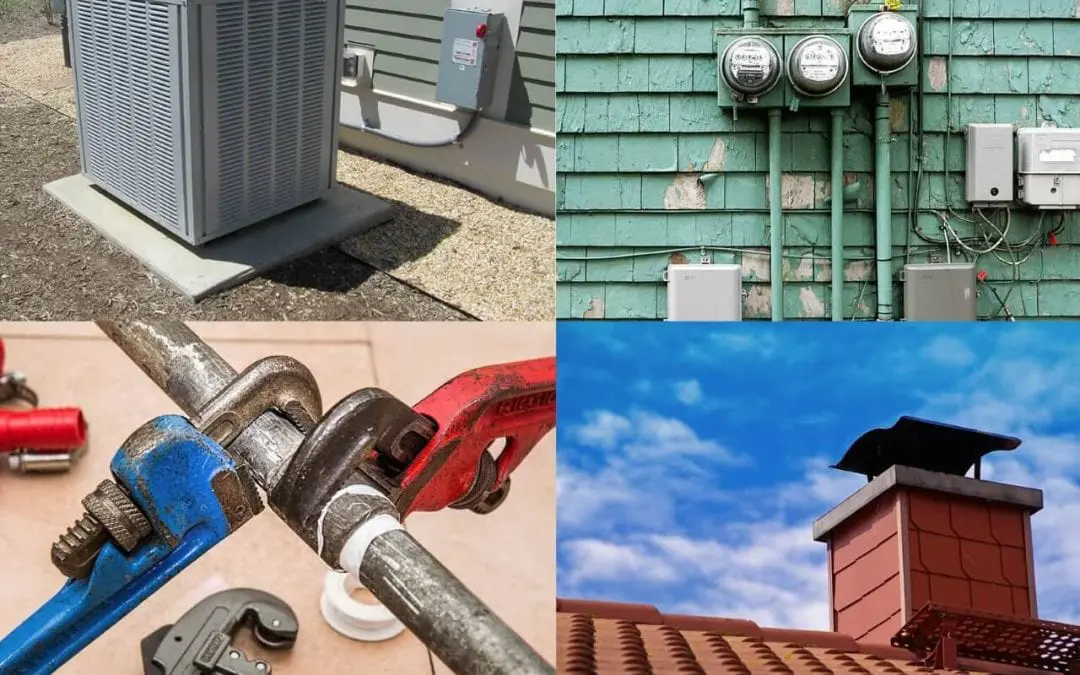Depending on how old your house is and where you live, a homeowners insurance company may require a 4-point home inspection. The failure of some systems in a home can cause expensive damage, so an insurance company wants to know the condition and age of components before issuing a policy.
What is Included in a 4-Point Home Inspection?
A 4-point home inspection looks at four major systems in the home; the roof, HVAC, electrical, and plumbing systems. The insurance company wants to know how old the components are, if they were well-maintained, and if the systems are in good working condition. The 4-point report will determine whether the insurance company is willing to cover your property and what your premiums will cost.
Roofing is Part of a 4-Point Home Inspection
A leaky roof can cause major property damage. Along with water damage, damp conditions are conducive to mold growth in the home. Repairs due to water intrusion or a complete roof replacement can be costly, so before providing coverage, an insurance company wants to know the condition of the home’s roofing.
During the 4-point home inspection, the inspector will determine what type of roof you have, the age of the roof, and what condition the roofing materials are in. The inspector will also note any missing shingles or tiles and any signs of a leak.
HVAC
Heating and cooling systems are major home components. In a 4-point home inspection, the inspector will note what type of HVAC system is in place and its approximate age. They will also assess if it is working properly and if there are any leaks or other issues with the system.
The Electrical System
The U.S. Fire Administration’s “Residential Building Electrical Fires (2014-2016)” report shows that there were 24,000 residential electrical fires each of those years. Home electrical fires caused a total of $871 million in property loss. Because of the risk of loss, the condition of a home’s electrical system is important to an insurance company.
The home inspector will record what type of wiring your home has. Is it copper, aluminum, or knob and tube (a type of wiring used in homes from the 1880s to the 1940s)? They also check the brand and condition of the electrical panel box and makes notes of circuit breakers or fuses.
A 4-Point Inspection Examines Plumbing
Similar to the electrical system, the inspector will check the type of materials of your plumbing system. Common types are CPVC, copper, lead, galvanized, and polybutylene. Supply lines require a different grade than drain lines. The home inspector will look for signs of water leaks. The age and condition of the water heater will also be noted.
A major defect in any one of these four systems can result in costly repairs to a home. To determine whether they’ll write a policy for your home, the insurance company may require you to have a 4-point home inspection first.
Professional Inspection Network offers 4-point home inspections to Los Angeles and the surrounding areas. Contact us to request an appointment.

